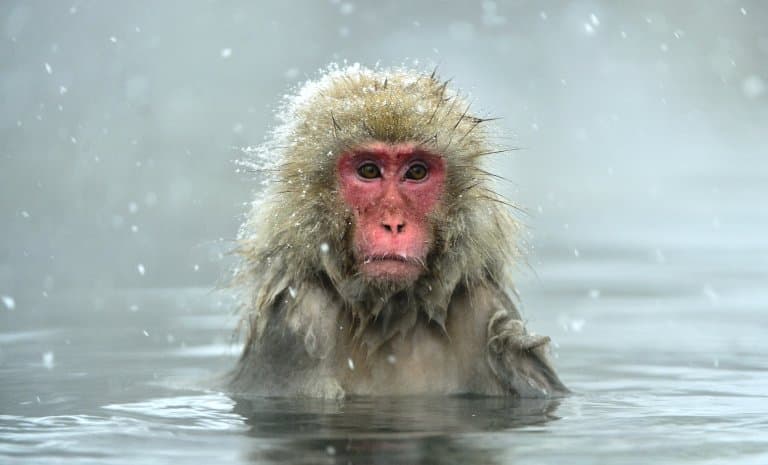
High in the snowy mountains of Japan, where winter temperatures drop well below freezing, a group of wild monkeys has learned how to stay warm in the most unexpected way: by taking hot baths. These are snow monkeys, officially known as Japanese macaques (Macaca fuscata), and they are among the most fascinating and iconic primates on Earth.
What Are Snow Monkeys?
Snow monkeys are a species of macaque native to Japan, and they hold the title of the northernmost-living non-human primates in the world. With thick, fluffy fur, short tails, and pinkish-red faces, they’re well adapted to survive harsh winters that would challenge most other monkeys.
They live in a range of habitats—from coastal lowlands to cold alpine forests—but they’re best known for the troops that inhabit Jigokudani Monkey Park in Nagano Prefecture, where they’ve become famous for their love of hot springs.
Hot-Tub Culture: How It Started
The snow monkeys’ habit of bathing in hot springs is not an ancient behavior—it actually began in the 1960s. A few clever monkeys from a local troop discovered that soaking in the geothermal hot springs used by humans helped them stay warm during the frigid winters.
Over time, this behavior spread through the troop, and now it’s a well-established part of their culture. Interestingly, not all Japanese macaques bathe in hot springs—only those in areas with natural geothermal activity, like Jigokudani.
Social and Intelligent
Snow monkeys live in complex social groups with up to several dozen individuals. These groups are matrilineal, meaning females stay with their mothers’ groups for life, while males usually leave once they reach maturity.
Grooming is an essential part of snow monkey society. It strengthens social bonds, reduces stress, and helps keep their thick fur clean.
They’re also highly intelligent and adaptable. Snow monkeys have been observed:
- Washing food before eating it
- Making snowballs for play
- Using thermal maps of hot springs to find the warmest spots!
Year-Round Life in the Mountains
While the image of snow monkeys bathing in steaming springs draws crowds in the winter, these macaques are active year-round. In warmer seasons, they forage for plants, seeds, insects, and even small animals. They’re omnivores with a diverse diet that changes with the seasons.
During spring and summer, babies are born and raised in the safety of the group. Come fall, the monkeys bulk up for winter by gorging on fruit and nuts—just in time for another round of snowy baths.
Conservation and Tourism
The population of Japanese macaques is currently considered stable, and they are classified as Least Concern by the IUCN. However, like many wild animals, they face threats from habitat loss, road construction, and conflict with humans.
Jigokudani Monkey Park has become a major tourist attraction, drawing visitors from around the world. Fortunately, the park manages the monkey population responsibly, allowing the macaques to live freely while offering people a rare glimpse into their lives.
Fun Facts About Snow Monkeys
- They can withstand temperatures as low as -20°C (-4°F).
- Some snow monkeys have been observed throwing snowballs in play.
- Unlike many monkeys, they thrive in snow-covered forests.
- The red face and bottom of adult snow monkeys become brighter during mating season.
Final Thoughts
Snow monkeys are more than just internet-famous hot tubbers—they’re a brilliant example of adaptation, culture, and social intelligence in the animal world. Whether they’re grooming each other in a snowy forest or soaking in a steaming onsen, these Japanese macaques remind us just how clever and resilient nature can be.
If you’re ever in Japan in winter, make a trip to see them—you won’t forget it.
More photos below ↓




















Disclaimer: This blog post is for edutainment purposes only and may not be entirely accurate.






